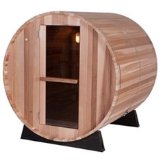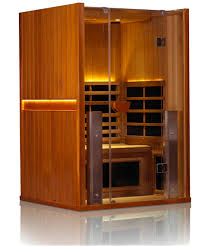What's the Best Wood For Your Sauna?
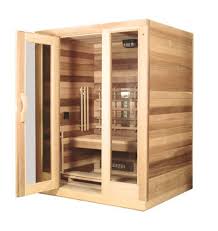
Wondering what wood to choose for your new home sauna?
Buying an infrared sauna for your home is one of the most important decisions you can make in terms of maintaining or improving your health.
Saunas have a number of health benefits, including ridding your body of toxins, improving cardiac health, easing joint pain and reducing stress. There are a number of manufacturers offering saunas for home use, which can make choosing the right sauna a tricky prospect.
There are many different factors to take into consideration when making your choice, from the heat source to the range of coverage, but one of the most important of these is also one of the most commonly overlooked: the wood used to build the sauna itself.
Important Considerations
If you’re like most people when it comes to choosing a wood you probably tend to think primarily of how it is going to look in your home.
This is understandable as your sauna is going to become a significant part of your home and you will want it to fit in with the overall design...but looks are really only part of the picture when it comes to choosing a wood.
There are many other factors that you need to consider as well, including durability, ability to withstand moisture and whether it has a tendency towards ‘off-gassing’, or emitting odors during use.
Remember that a sauna is essentially a large oven, meaning the materials used in its construction will be regularly subjected to temperature extremes and excessive humidity.
For this reason, you want to be sure that any wood you use will hold its shape through all the heating and cooling and will not be damaged by moisture.
At the same time, the purpose of a sauna is to improve your health and reduce stress so you don’t want to use any materials that may compromise the health benefits of your sauna.
Sauna Woods Through The Years
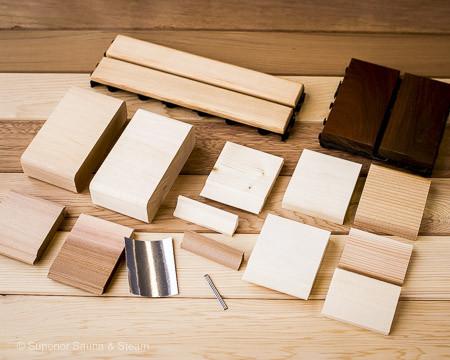
Saunas originated hundreds of years ago in Europe and primarily as outdoor facilities, so at that time the types of wood used were generally determined by availability and ability to blend in with the natural surroundings.
For this reason the builders of those early saunas tended to rely on woods like hemlock, spruce, pine and aspen, woods that were easily found in their home environment and would fit in easily with the environment around them.
Unfortunately, these woods are also highly susceptible to mold and fungus growth, making it necessary for users to regularly clean and dry out the sauna after use.
This didn’t seem like a real issue at the time, and particularly when the saunas were used outdoors, but it is much more impractical, and even dangerous, when it comes to saunas used inside the home.
When home saunas first became popular in the U.S. in the 1980’s, redwood, sourced directly from California, became a primary choice based on its easy availability and attractive color.
However, it soon became apparent that as redwood aged it darkened, leaving saunas built from it looking dingy and worn out.
As redwood supplies began to diminish and prices escalated, sauna manufacturers began moving away from it and by the 1990’s red cedar had taken its place as the top choice for home sauna use.
It has a similar look to redwood but doesn’t darken and its light weight and natural mold resistance make it a much more practical choice to this day.
You Need to Avoid Cheap Woods
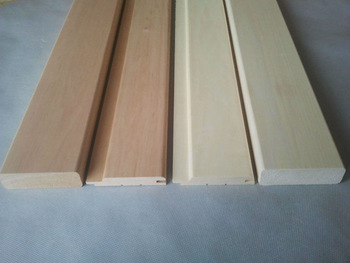
As the popularity of home saunas has increased, many manufacturers have opted to use cheaper woods such as poplar, hemlock and pine, in order to keep production costs down.
This makes it easier on their budgets and helps them keep costs down, but unfortunately it isn’t ideal for their customers as these woods are flimsy and don’t stand up well to regular use.
They also tend to have more knots and sap, both of which can make them warp and emit toxic fumes during use.
For this reason, you should avoid saunas made from these woods, particularly if you have allergies, which can be exacerbated by off-gassing.
Not surprisingly, when discussing saunas installed inside the home, or even for backyard use, the considerations involved in selecting a wood become much more important.
Safety, durability and aesthetics all have to be given careful thought as each can impact users in a variety of ways. A sauna can be a considerable investment and therefore you want to be sure that it will stand up to years of use.
At the same time you want both your home and your family to be safe while the sauna is in use.
Finally, you want it to provide a relaxing, welcoming environment to help reduce stress.
As mentioned above, a sauna is essentially a large oven and the materials used in its construction need to stand up to regular use.
Saunas are a wonderful way to rid your body of built up toxins and reduce excess stress, but that can’t happen if the wood used actually adds toxins to the environment.
With the wrong choice of wood your sauna could actually end up working against you rather than providing the healthful, energizing environment you want.
With all of this in mind, here is a more detailed look at some of the popular types of wood used in sauna construction today and what you should bear in mind when choosing each for your home sauna.
The Most Popular Sauna Woods
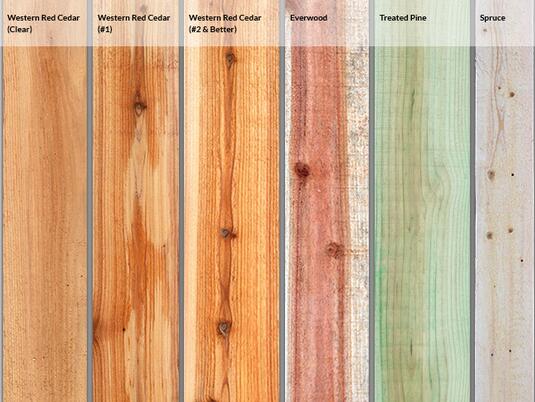
Hemlock – this is one of the softer woods, which is why it is the most popular choice among model builders and woodworkers.
Its easily pliable consistency makes it ideal for crafting but not as good a choice for saunas as it can not stand up to the temperature extremes of regular sauna use.
While it is lightweight, it is also flimsy and will easily bow and become distorted when exposed to heat and humidity. So not the best choice for you.
Poplar – as one of the more common woods in most parts of the world, poplar is an attractive choice in terms of availability.
It ranks decently in terms of strength, durability and ability to withstand decay but it does tend to be soft and porous, which means it doesn’t hold up well to the kinds of temperature extremes involved in sauna use.
It also tends to dent easily, which can take away from the overall look of your home sauna.
Pine – this is another wood that is easily found in most parts of the world and often preferred from an aesthetic viewpoint as it can be quite attractive.
Unfortunately, when it comes to sauna use, that’s about where the benefits of pine end. It is low in strength, lightweight and doesn’t stand up well to decay, making it a poor choice in terms of durability.
It is also prone to knotting, which can be a real issue as the density of the knots can differ from the density of the rest of the wood, meaning each will wear at a different rate, contributing to the overall lack of durability.
More importantly, though, pine also has a high sap content and when it is exposed to high temperatures those sap oils are released, producing both a hot, tar-like substance that can cause burns and oil-like fumes that can cause headaches and other health problems.
Aspen - this is a popular choice for those with allergies, as this American hardwood has very low toxicity. It is also very aesthetically pleasing with its rich light color.
Eucalyptus – this is a strong, durable wood that is commonly used for cabinetry since it is easy to stain and will hold color well, making it easy to fit into any home décor.
It is also a green product that has no natural fragrance, making it good for the environment and good for your health, another reason why it is a popular choice in sauna manufacturing.
Basswood – proven to be hypoallergenic and odor free, basswood is one of the best choices for individuals with allergies. It is also consistent in color and has very few knots, making it pleasing aesthetically as well.
It tends to stand up well to the heat of a sauna, with one of the best heat to strength ratios of any wood, which means a basswood sauna can be a good long term investment.
Better still, it can be sourced directly from the U.S. so that it is readily available and cost efficient.
Cedar – still the number one choice for saunas, cedar stands out from the rest for a number of reasons. Like basswood, it is a soft wood that stands up well to regular use and is particularly good at withstanding temperature extremes and excess moisture.
It has millions of tiny air cells that prevent the surfaces of your cedar sauna from becoming hot to the touch. At the same time it does not absorb moisture so it won’t expand or warp over time.
The same phenolic oils that help it resist weathering also prevent mold and fungus growth, and it also has natural antimicrobial and antibacterial properties, all of which make it a particularly healthy choice.
Best of all, not only is it not prone to toxic ‘off-gassing’, it actually gives off a pleasant scent that can add to the relaxation aspect of the overall sauna experience. However, some may be sensitive to the cedar odors.
With large red cedar forests common throughout Oregon and British Columbia it also easily sourced, which makes it extremely cost effective.
Which Brands Offer Which Woods?
Most of the best infrared sauna brands as well as the traditional ones use either red cedar, basswood, or both. Others offer high grade versions of the some of the other sauna woods.
Let's take a look at the most popular ones to see what each uses in their saunas...
|
Sauna Brand |
Woods Used |
|
Western Red Cedar, Basswood | |
|
Western Red Cedar, Basswood, Eucalyptus | |
|
Western Red Cedar, Poplar, Hemlock | |
|
Western Red Cedar | |
|
Aspen, Hemlock | |
|
Cedar, Hemlock | |
|
Cedar, Hemlock | |
|
Cedar, Hemlock | |
|
Aspen | |
What's the Bottom Line on Wood for Saunas?
When it comes to choosing a home sauna, wood should never be an afterthought.
The wood used in the construction of a sauna can have a direct impact on the durability, safety and health benefits that you derive from it so you should pay careful attention to this important detail.
While looks are certainly a consideration, you also want to make sure that it will stand up to regular use and provide the maximum health benefits.
All of that can hinge on the type of wood you choose, so it pays to be aware of the options that are available so that you can make an informed decision.
Remember, the choice you make today could affect you for years to come, so don’t take that wood lightly…make the right choice so that you and your family can get the most out of your home sauna.
Infrared Saunas
Sauna Heaters
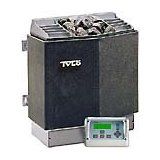
How to Install a Wood Sauna Heater
Sauna Kits
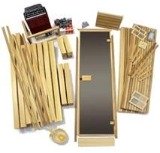
Buying Guide
